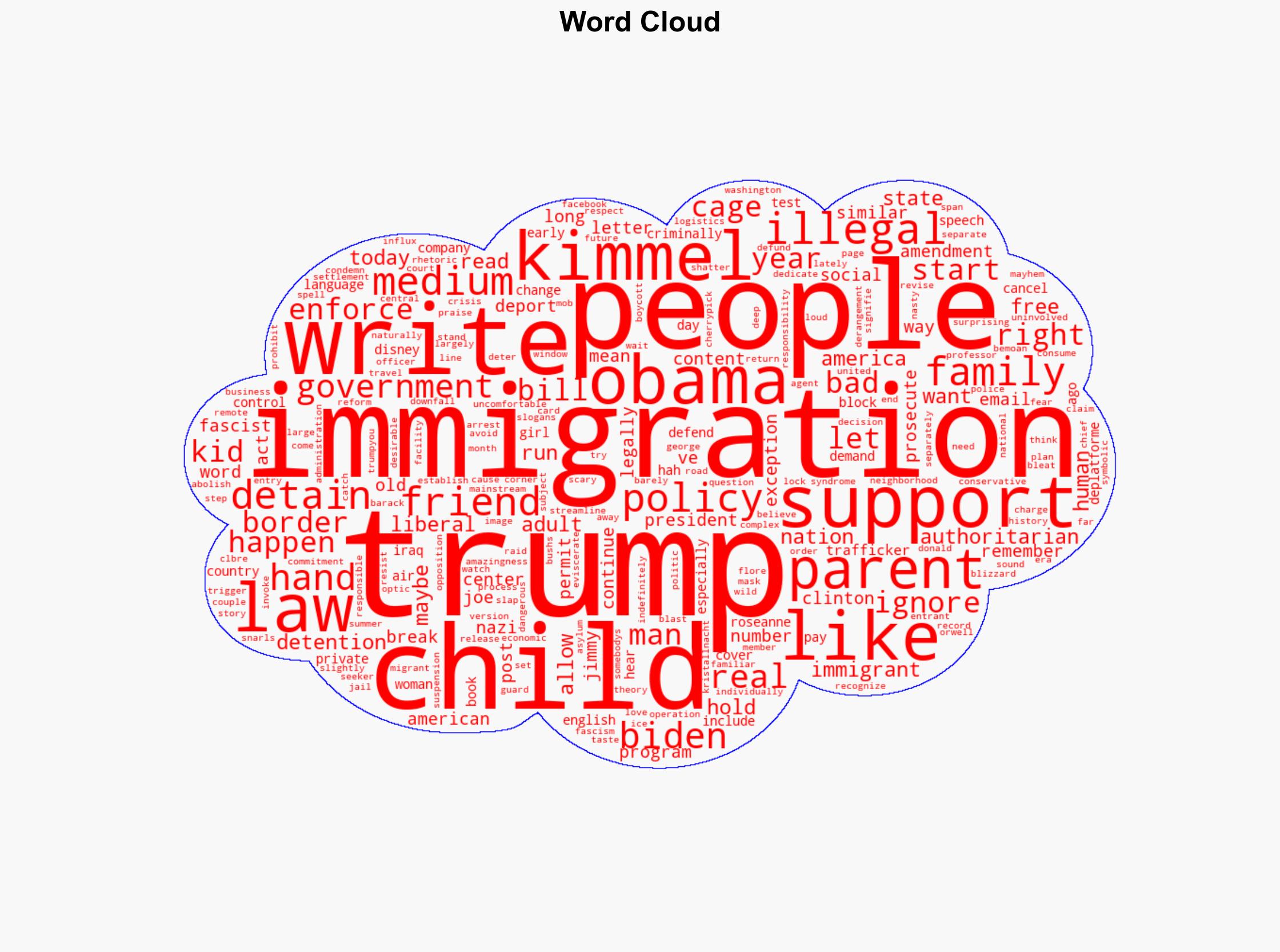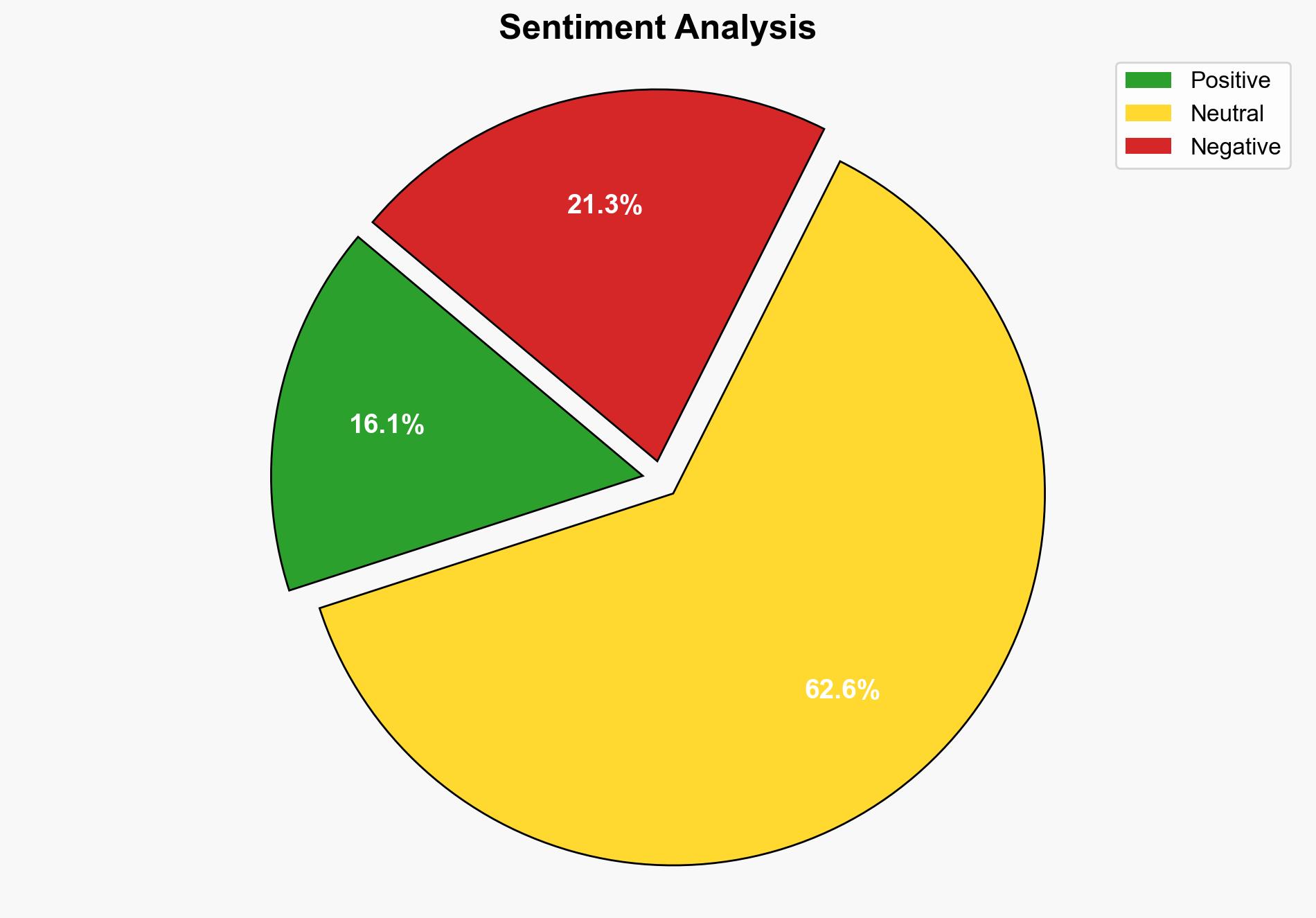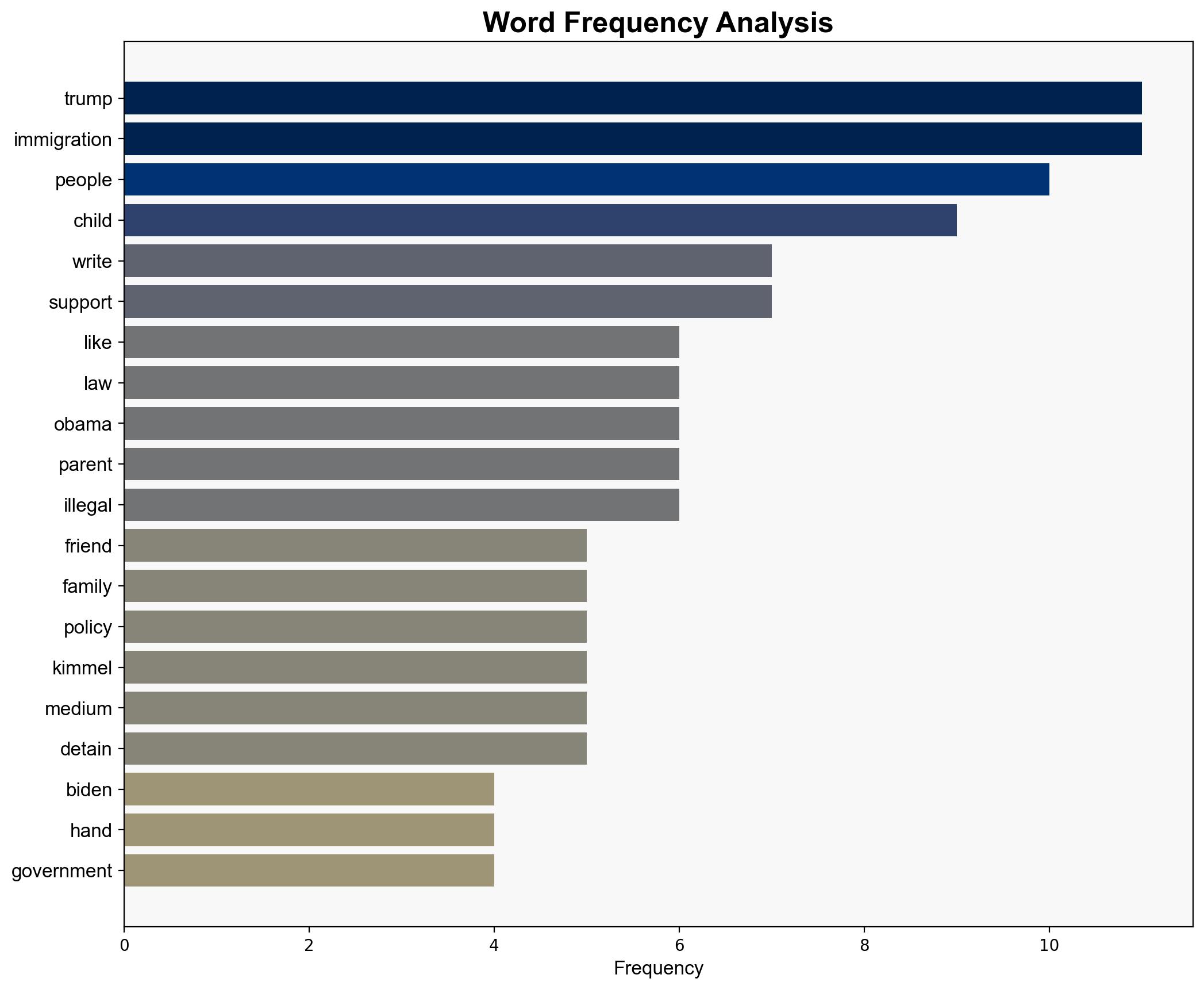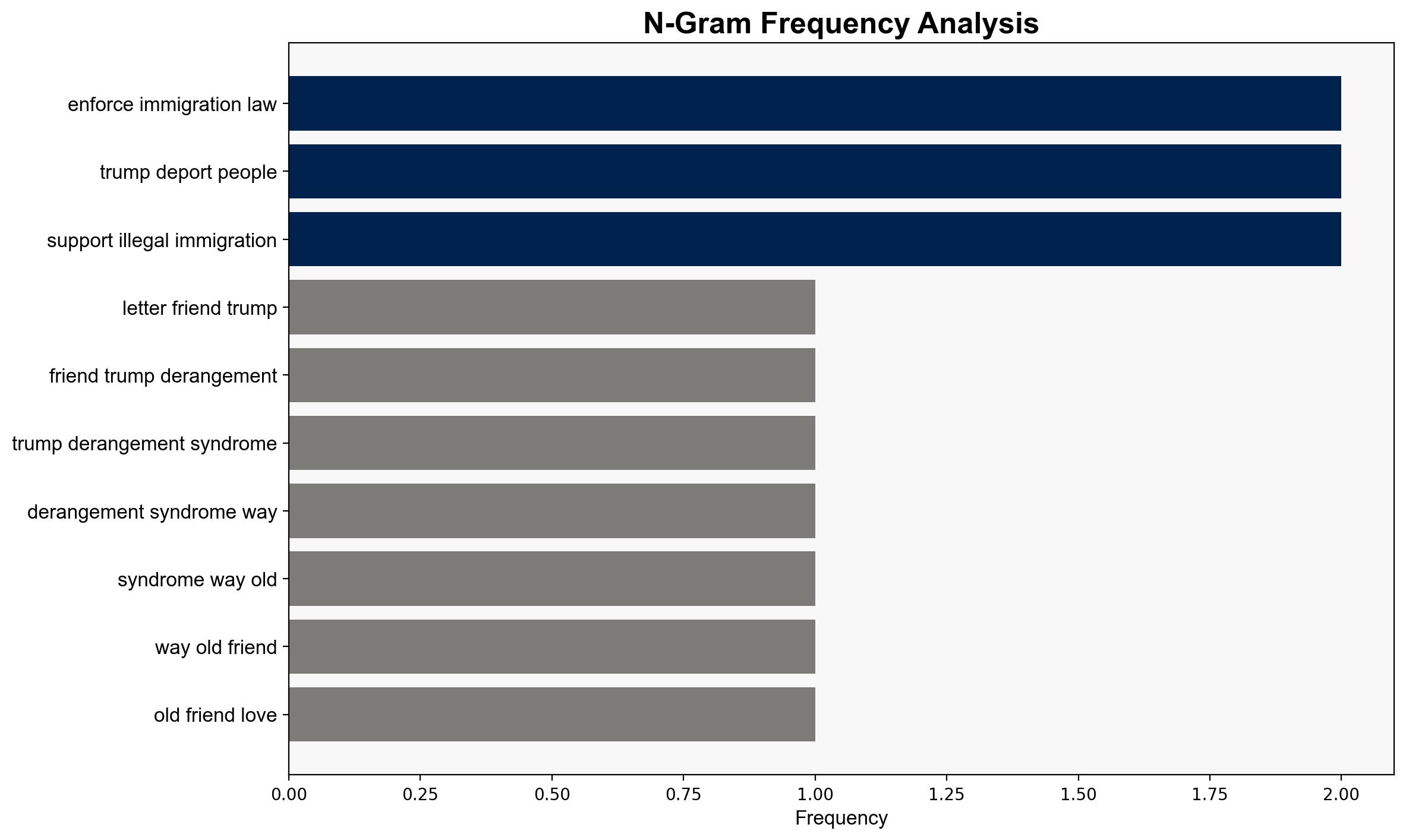A Letter to a Friend – The American Conservative
Published on: 2025-09-29
Intelligence Report: A Letter to a Friend – The American Conservative
1. BLUF (Bottom Line Up Front)
The analysis suggests two competing hypotheses regarding the narrative on immigration policy and media portrayal. The first hypothesis posits that the media selectively amplifies certain narratives to influence public perception against specific political figures. The second hypothesis suggests that the media coverage reflects genuine public concern over immigration policies and their humanitarian impact. The first hypothesis is better supported by the evidence, with a moderate confidence level. It is recommended to monitor media narratives and public sentiment to anticipate shifts in policy discourse.
2. Competing Hypotheses
1. **Media Bias Hypothesis**: The media selectively highlights immigration policies under certain administrations to shape public opinion against them, while downplaying similar actions by previous administrations.
2. **Public Concern Hypothesis**: Media coverage accurately reflects genuine public concern over the humanitarian implications of immigration policies, regardless of the administration in power.
3. Key Assumptions and Red Flags
– **Media Bias Hypothesis**: Assumes that media outlets have a consistent bias and agenda. Red flags include potential confirmation bias and selective reporting.
– **Public Concern Hypothesis**: Assumes that media coverage is a direct reflection of public sentiment. Red flags include the potential for media to influence rather than reflect public opinion.
– Missing data includes comprehensive analysis of media coverage across different administrations and public opinion polls.
4. Implications and Strategic Risks
– **Media Bias Hypothesis**: If true, this could lead to increased polarization and distrust in media, impacting social cohesion and policy-making.
– **Public Concern Hypothesis**: If accurate, it suggests a need for policy adjustments to address humanitarian concerns, potentially influencing electoral outcomes and international reputation.
– Strategic risks include potential escalation of public unrest and policy gridlock.
5. Recommendations and Outlook
- Conduct a comprehensive media analysis to identify patterns of bias or balanced reporting.
- Engage in public opinion research to gauge genuine concerns versus media influence.
- Scenario Projections:
- Best Case: Balanced media reporting leads to informed public discourse and effective policy adjustments.
- Worst Case: Media bias exacerbates polarization, leading to societal unrest and ineffective governance.
- Most Likely: Continued debate over media influence and policy effectiveness, with gradual shifts in public opinion.
6. Key Individuals and Entities
– Donald Trump
– Barack Obama
– Joe Biden
– Bill Clinton
– George Bush
– Jimmy Kimmel
7. Thematic Tags
national security threats, media influence, immigration policy, public perception




